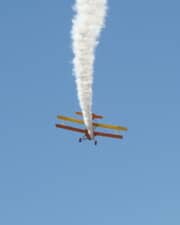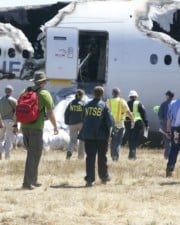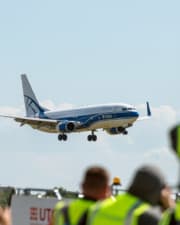If you’ve ever looked at chartering an aircraft of any kind, or have hung around pilots for long enough, you’ve probably come across or heard a fair amount of aviation jargon. But whilst a lot of pilot jargon is rather simple and easy to work out, the concept of a dead leg flight is a little harder as it requires more of an in-depth knowledge of how flight operations work. So what exactly is a dead leg flight in aviation?
A ‘dead-leg’ flight – often also called a repositioning flight or an empty-leg flight – is one that has no passengers or cargo. That is, it’s a flight whose operational purpose is to ferry an empty airplane from one location to another, to get it to where it is needed.
Overview of Dead-Leg Flying
In the world of business aviation, between 10% and 30% of flights are likely to return empty. It may be that a customer chartered an airplane for a one-way trip, so the aircraft has to return to base empty, or be repositioned for its next revenue-generating flight.
In the USA, commercial flights connect approximately 500 airports. Private flights serve ten times as many destinations. There are 5,000 airfields in the United States that handle private arrivals and departures. In terms of customer convenience, private aviation is the way to go.
In the USA alone, around a thousand private flights take off and land every single day of the year. Unless their operating companies are super-efficient almost to the point of clairvoyance, many one-way flights will necessitate a repositioning dead leg.
Major airlines also dead-leg from time to time. For example, if an airframe is heading off to (or returning from) a maintenance overhaul, there will only be a ferry crew on board for those flights. Delivery flights of new aircraft are also dead-leg flights.
Regional airline operations also involve dead-leg flights every so often. Airliners that can carry a few dozen passengers may be chartered or scheduled on one-way legs, and required for a return leg that departs from an airport different from the first let’s destination.
In such cases, the airplane needs to be ferried from its first destination, to the departure point for its next flight. The flight crew on the repositioning leg will find themselves alone on the airplane, with an empty passenger cabin, an empty hold, and no cabin crew.
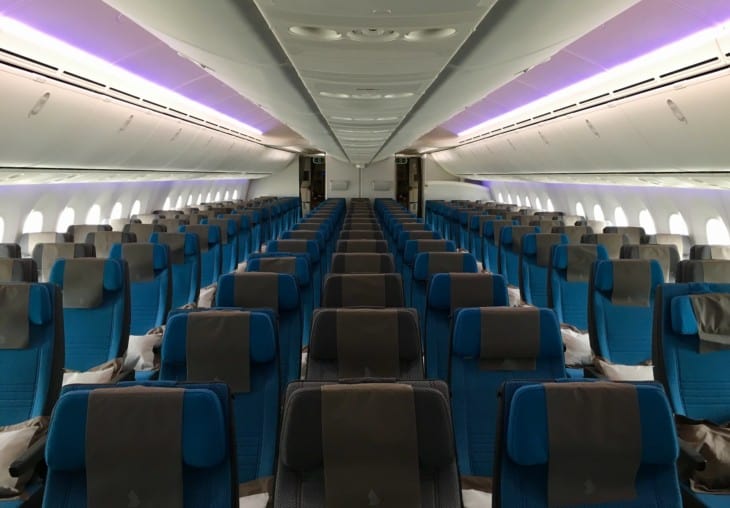
Dead-legging can be appealing to pilots, for a number of reasons. Firstly, the airplane is usually far below its normal operating weight, thanks to the absence of passengers and cargo, so it will be unusually responsive and sporty to fly.
Secondly, pilots can feel that they are freed from part of the burden of their routine responsibilities. There are no passengers to complain about flight delays and no need to wait for caterers to supply in-flight passenger meals.
At such times, it’s really important for pilots to remain professional, as we shall see later on.
Dead-leg flying should not be confused with ‘dead-heading‘, which is when flight crew are flown as passengers, usually on one of their own company flights, to position that crew to operate another flight.
Why Operate Dead-Leg Flights?
Your first reaction might be, “Isn’t it a dreadful waste of fuel, airframe hours and crew salaries to fly airplanes around empty, as well as the environmental aspect and carbon footprint?” Those are really good points, deserving of an answer.
In order to maximize revenue, and have their airplanes where their customers need them to be, airlines and business jet operators have to look at the whole, big picture.
In the grand scheme, occasional dead-leg flights can be the best solution, meaning that fewer aircraft are needed in the fleet, and the optimum number of revenue-generating flights can be flown.
Can I Take Advantage of a Dead-Leg Flight?
Yes, you can make dead-leg flights work to your benefit, if you are a customer looking to make a big saving on private aircraft charter. Business jet operators are always looking for ways to increase revenue. One way is to sell empty-leg flights at a discounted price.
It is in the operator’s interest to offer a bargain charter rate for dead-leg flights, as any revenue is better than none at all. Some private jet charter companies will email you dead-leg opportunities as they come up, if you register on their website.
Sites such as Flapper help you find dead-leg flights operated by any provider.
You could also try the JetXChange software from Charter Flight Group, which tracks private airplanes and their planned flights, showing the best opportunities for dead-leg flights, and the range of fares you can expect to pay.
Consider the case of a Cessna Citation chartered from Miami to Chicago. The flight crew and cabin crew need to be back in Miami as soon as possible and the operator wants their airplane back at base, available for further revenue reservations.
Let’s imagine that someone rocks up and says, “Hey, I’ll pay you to let me sit on your airplane while you fly it back to Miami!” What do we say? Even if they offer us $1, that’s $1 more than we would get for flying the airplane home empty.
Of course, all private airplane operators worth their salt would reject that derisory offer and require a reasonable recompense. But the economic principle still stands. Any revenue is better than no revenue.
That said, we can surely expect the market to support a realistic offer for a private flight, even though the airplane has to fly empty if we don’t book.
How Much Does A Dead-Leg Flight Cost?
For a dead-leg flight on a private business airplane, you can expect to pay between 40% and 70% less than the usual market rate.
Many factors affect the cost of a dead-leg flight, including the route and the aircraft type. Some operators advertise very low rates for dead leg flights, even as low as $500. It’s practically impossible to get an actual private flight for such a low price.
More realistic prices include the popular New York to Florida route – a large number of operators offer dead-leg flights in one direction or the other – for $5,000. You can pick up a short hop from Los Angeles to Las Vegas for $2,500.
To access the best deals, try to find routes that are the opposite direction of the trips most people want to make.
For instance, on Boxing Day each year, a large number of private aircraft are chartered from the Northeast, down to the Caribbean. That’s a good time to pick up a bargain private fare from the Caribbean up to the Northeast.
The same logic applies to Palm Beach and New York City – there are dead-leg flights to be found on the northbound route, every winter.
It is very tempting, for those who would not ordinarily travel by private jet, to experience the comfort and convenience of private passenger flying, at a small fraction of the usual high cost.
Instead of having to check in three hours ahead of your flight, and stand in line for security checks, how about arriving at the airport ten minutes before take-off? However, it’s not all sunshine and roses – there are disadvantages too.
Dead-Leg Disadvantages
The downside, of course, is that dead-leg flights can get re-scheduled or canceled, if the needs of the original customer change. The unpredictability, and the short notice of dead-leg flying, are the prices you pay for the financial savings.
It’s similar to flying on an airline standby ticket – you need to have a flexible itinerary and keep your bags packed by the door, ready to leave at the drop of a hat.
Look at it like this. If you are the original customer and you get delayed by traffic or some other unforeseen circumstance, your private jet will not depart without you.
However, if you are the dead-leg customer, you will have to put up with the vagaries of the original customer’s whims, which may delay your flight.
Approximately one in four dead-leg flights end up being canceled or rescheduled, if the customer who booked the full revenue flight has a change of plan.
Therefore, if your trip is essential, have a backup plan, such as a flexible business class reservation with a commercial airline, that you can fall back on if the need arises.
Also, be sure to read the terms of the dead-leg sector agreement very carefully. Full-price private flying includes much more than transportation from A to B. Booking at full price, you are entitled to expect a high level of in-flight service, amenities and entertainment.
On a dead leg, don’t expect all the frills normally associated with private flying, such as a flight attendant at your beck and call, or smoked salmon, champagne and caviar on demand.
Your bargain basement dead-leg package might not include any of that; you may find that it’s just point-to-point travel, albeit in luxury accommodation.
Similar to a reduced-rate reservation in a hotel executive suite, you could find the airplane’s minibar empty or locked, and a lack of such amenities as in-flight wi-fi and video streaming.
Even at dead-leg rates, private flying is of course way more expensive than commercial passenger flight. That said, if you are heading off on the dream cruise of a lifetime, what better way to get in the mood than to turn up at the departure port by private jet?
The Future of Dead-Leg Flying
Has the COVID-19 pandemic harmed or enhanced dead leg flying? Globally, commercial aviation has fallen by over 50% since the pandemic began. Paradoxically, in the light of that statistic, private jet aviation has risen by over 15% in the same time period.
Could Technology Mean The End of Dead-Leg Bargains?
Private jet reservation apps such as TailHail make it easier than ever to sniff out and book dead-leg flights. Freed from conventional present-day complications, the process of booking a dead-leg private jet can be no more complicated than reserving a seat from New York to Miami on Expedia.
That might sound good from the traveler’s point of view, but is it really such great news? What works well for the individual might not be so healthy for the industry as a whole, as we shall see.
The low cost to the passenger of dead-leg travel stems from the operator’s desire to get what revenue they can from their repositioning flights, however meager that income may be.
But, if the operator can secure a near-full-price reservation on a dead leg, so much the better for them.
Through apps like TailHail, the information superhighway effectively turns dead legs into scheduled flights, advertised to a large number of potential customers.
As any first-year economics student will tell you, prices are determined by supply and demand. If demand for a given supply is high, prices are driven upward.
For airline standby tickets, demand is quite low, because not many people are prepared to put up with the last-minute, uncertain nature of standby travel. Until TailHail and similar platforms arrived, the same was true for dead-leg private airplane charter.
Now, though, all that has changed. With apps and bots scouring the internet, tracking the location and availability of every dead-leg private jet, potential dead-leg flights are no big secret any more.
As soon as a dead-leg flight becomes a thing, everyone who’s interested knows about it. Up goes demand, and up goes prices.
Dead-leg flights will only stay comparatively cheap if there are few people booking them. If there is competition to reserve a dead-leg flight, the operators will soon get wise to that and boost up the minimum asking price.
Maybe technology like TailHail is the death knell of low-cost dead-leg private flying.
And perhaps, when all is said and done, that is no bad thing. The aviation industry has been hit hard by COVID-19 and is struggling to get back onto its feet.
If air travel – like luxury transatlantic sea travel, on ocean liners like the RMS Olympic, sister ship of the ill-fated RMS Titanic – were to become no longer economically viable, then all of us who depend on aviation, as a livelihood, a hobby, or part of our day-to-day lives, would lose out.
The bottom line is, we all need to invest in aviation if we want to keep it.
While every one of us likes the idea of getting something for nothing, as a famed economist once said “there’s no such thing as a free lunch”. Someone always has to pay. TailHail and other apps will ensure that the customer, not the provider, eventually picks up the bill.
So, although technology looks set to make insanely cheap dead-leg private flying disappear, that same technology will probably drive private aviation prices down in the long run.
Just as increased demand pushes fares up, full public access to all the information available about the market will cause the price of private flying to even out, because operators who charge inflated prices will get very little business.
Dead-Leg Disaster
As mentioned earlier, pilots often look forward to dead-leg sectors, maybe sometimes regarding such a flight as a more-relaxed-than-usual day in the office.
In October 2004, a twin-engine Bombardier CRJ-200 regional jet was on a dead-leg repositioning flight when, unfortunately, it crashed near Jefferson City, Missouri.
Tragically, both pilots – the only persons aboard the airliner – were lost. Thankfully, there were no casualties on the ground, as the pilots took care to avoid a residential neighborhood during the final seconds of the flight.
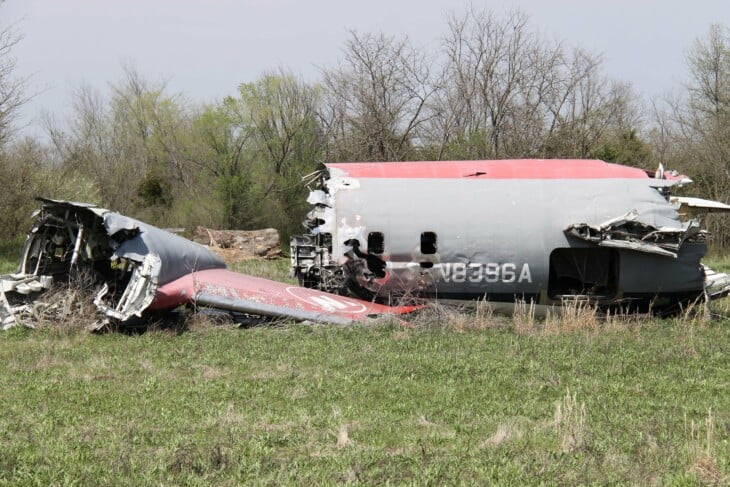
The investigation found that the pilots, enjoying the comparative freedom of a dead-leg repositioning flight with no passengers and no cabin crew, had successfully sought air traffic control clearance to climb to flight level 410 (41,000 feet), the aircraft’s operating ceiling.
There was no reason for them to do this, other than that they wanted to. Investigators also found that, in the initial climb phase of the flight, the pilots had experimented to determine the maximum climb rate of the very light, unloaded airplane, which briefly reached 10,000 feet per minute.
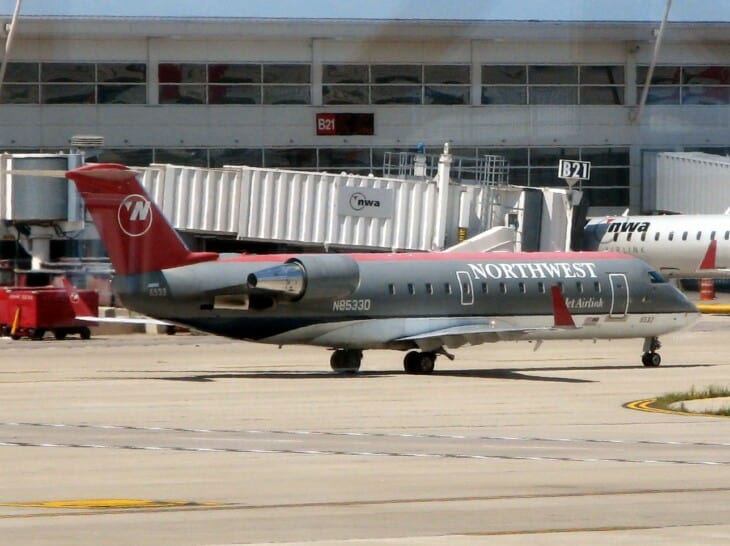
In the cruise phase at FL410, the airspeed gradually fell back, as the engines were not developing sufficient thrust at that altitude to maintain cruise speed. Eventually, the engines flamed out, and the airplane stalled because of its low speed.
After recovering from the stall by descending to increase airspeed, the pilots tried vainly to restart the engines.
However, because of the stress that had been placed on the engines during the rapid climb to FL410, they suffered a problem known as core lock, which prevented the N2 compressor from turning.
Sadly, the pilots were unable to restart either engine despite several attempts, and the jet eventually crashed short of Jefferson City Memorial Airport.
The investigation report highlighted the importance of pilots remaining professional while flying dead-leg operations, just as they would when carrying passengers. Had the crew done so, the accident would almost certainly not have occurred.
The lesson learned is that pilots operating dead-leg flights, with empty airplanes, must follow the same procedures, with the same level of professional dedication, as they would when operating a routine passenger flight.
Related Posts



